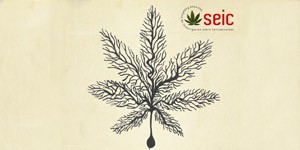By Raquel Peyraube

Dr. Raquel Peyraube is a doctor in medicine and a specialist in the problematic use of drugs. She has trained in psychiatry, toxicology and psychoanalytical psychotherapy and in subjects such as childhood, adolescence and social exclusion. She has 28 years' experience in the field. Throughout her career, she has made contributions in training, prevention, treatment and damage reduction, including innovating theoretical and methodological developments with emphasis on ethical issues. As a former clinical director of ICEERS, she is now an ad hoc consultant of the Uruguayan National Drugs Secretariat giving advice on reform of the public drugs policy and of the Institute of Cannabis Regulation and Control. She is a clinical researcher and a member of research teams for monitoring the law in Uruguay. She sits on several international scientific committees and is an active member of the IACM (International Association for Cannabinoid Medicines). She currently works on the development of clinical trials, medical education on medicinal cannabis, and dissemination of information and advice for reform of drugs policies in various countries.
On 20 December 2013, Uruguay enacted Act 19.172, legalising cannabis for all uses: adult (commonly and erroneously-termed recreational use), industrial, medicinal and scientific. Uruguay thus became the first –and to date the only– country in the world with a national policy of legal regulation for all applications of cannabis. Uruguay's legislative model is also unique in terms of the pillars on which the law was drafted: public health, human rights and domestic security.
Once the Cannabis Regulation Act had been passed into law, the Instituto de Regulación y Control del Cannabis (Institute of Cannabis Regulation and Control or IRCCA, www.ircca.gub.uy), working in tandem with the National Drugs Council (JND www.infodrogas.gub.uy), immediately began working on implementation of the legislation, albeit at a slower pace than the population and the country needed. It also coordinated with the various ministries and secretariats of state with powers related to implementation.
Several projects are now underway for producing industrial hemp, with close on 5,000 individuals registered for self-cultivation and nearly twenty cannabis clubs. The first cannabis is expected to be available from licensed producers in August this year, after which it will be possible to purchase it in pharmacies.
There are various for the slow pace of the process. These include an absence of prior experience elsewhere in the world; the need to train people to ensure that this complex system operates properly; political disagreements and a change in government.
Civil society has taken an active part in the implementation process. Working with the Ministry of the Interior, we drew up a protocol for police intervention under the new law, in order to protect the newly established rights of growers and clubs.
In the case of cannabis for medicinal and scientific use, the delay has been even greater. On 4 February 2015, fourteen months after enactment of the law, the Ministry for Public Health (MPH) finally published a decree regulating this area. Among other stipulations, this decree establishes that only registered doctors may prescribe cannabis for medical use, in accordance with current legislation on prescriptions of psychotropic substances (applicable to both plant and pharmaceutical varieties). Cannabis for medicinal use may only be marketed through pharmacies classed in Category 5 (drug stores and wholesalers), Category 2 (dispensaries in hospitals, clinics and health centres) and Category 1 (retail pharmacies for the general public). However, not a single product of pharmaceutical quality is yet available on the market.
In this context, since issuing of the MPH decree, members of the medical community have expressed concern that they have not been trained to prescribe these products. This concern was expressed by the Medical Syndicate of Uruguay (SMU www.sermedico.com.uy/the-smu), which turned for help to Dr Julia Galzerano, a member of the organisation and a leading expert on drugs and HIV-AIDS in Uruguay. She suggested bringing me in on the project, given my work in developing clinical research protocols with medicinal cannabis, my clinical work in this field and my participation in drafting Act 19.172.
Dr Galzerano and I developed a design and strategy for implementation, which was unanimously approved by the Executive Board of the SMU. As a result, SMU and ICEERS (iceers.org/contact-iceers.php) organised the first course in Cannabis-based Medicine in Uruguay, with support from Dr Galzerano and myself in the role of executive and academic coordinators.
The essential aim of the course was to train doctors, practitioners, interns and nurses, and to start to prepare for prescription. Learning how to prescribe involves more than just the pharmacological aspects, dose and interactions. That is the start, but further learning can only come through clinical experience.
However, we also had other objectives, arising out of a variety of factors:
- the large number of colleagues who, with little or no rigorous scientific information, still opposed the use of cannabis and cannabinoids as safe and effective substances for treating severe and frequent pathologies;
- the fact that some colleagues had already begun operating in this field, though still on an isolated basis;
- the failure of the official syllabus of the School of Medicine to include any study of cannabinoids or the endocannabinoid system (despite the fact that THC was discovered in 1964, its interaction with receivers in the endocannabinoid system 20 years later, and anandamide –one of the endocannabinoids in the human body– in 1992);
- and finally the need for a critical mass from the medical community to carry implementation forward.
Against this backdrop, Dr Galzerano set out to create a group of doctors with training of excellence in the field to establish a standard for medical practise and prevent the use of pseudo-shamanic practices (or as I call it, “Westernised cannabis shamanism”) among patients.
We also wanted the course to act as a pilot experience, laying the foundations for further postgraduate training, in the hope that in the future Cannabis-based Medicine or Cannabinology would be taught as part of the curriculum for a medical degree.
Finally, our intention was also to promote active participation by those attending the course –as members of the medical community– in fighting for respect for the patients’ right to access standardised, affordable and quality-controlled products, as part of the therapeutic arsenal of the doctor and of the official pharmacopoeia, allowing them to be subsidised under the Integrated National Health System (www.msp.gub.uy/sites/default/files/18.211.pdf), just like any other medicine.
In order to meet the highest academic standards, we recruited researchers and clinicians from prestigious centres and universities with experience in the field. It was necessary to ask the authors themselves to provide the “alternative bibliography”, a library of works not disseminated during the years of cannabis prohibition.
The project involved a financial outlay which the SMU was unable to meet on its own. We therefore turned for support to other organisations, including the JND, the MPH, the IRCCA, the School of Medicine of the University of the Republic, the Medical Association and the PanAmerican Office of Health (OEA).
The International Association for Cannabinoid Medicines (IACM www.cannabis-med.org) provided academic backing, in recognition of the level of the proposal, in terms of the design and contents of the programme and the quality of the international guest lecturers, many of them IACM members (as I am).
Financial support was provided by the SMU, the JND and Phytoplant Research (www.phytoplant.es/phytoplant-research-sl-es/) who were the main sponsors, as well as the IRCCA, Fundación CANNA (www.fundacion-canna.es) and Expocannabis Uruguay (www.expocannabis.uy). With their help we managed to cover most of the costs of the project, thus allowing us to establish an affordable registration fee and offer 100% scholarships to colleagues with low resources and interns. We are sincerely grateful to all of these bodies for their confidence in us, essentially on behalf of everyone seeking to alleviate ailments for which conventional medicine and treatments have been unable to provide effective solutions.
We had to set a cap on registration of 120, with priority being given to Uruguayan doctors. Unfortunately, this meant that many interested parties, including some from other countries in Latin America, were unable to attend.
A website was created (www.smu.org.uy/cmc) showing the programme, the guest lecturers and national hosts with their biographies, recommended bibliography and other supports. Logging in with their user name and password, registered professionals can also view the presentations and specific bibliography provided by each of the different lecturers.
The course began on 23 April 2016 and is proving to be a great success. We have even been honoured to have some associate and deputy lecturers from the School of Medicine enrolling on the course.
The programme itself is divided into six modules and covers a range of subjects. These include the characteristics of the plant and its active components, production for medicinal use and quality control, the endocannabinoid system, the pharmacology of cannabinoids, formulations, products and prescriptions as well as clinical modules, dealing with the different pathologies in which cannabinoids have proved beneficial (based on high and medium quality evidence) and some potential uses that can be inferred from pre-clinical research. The clinical modules cover neurological diseases, mental health disorders and addictions, pain, cancer and palliative care, inflammatory and autoimmune pathologies, and skin pathologies. Ethical aspects of research and clinical practise and the decree regulating medicinal cannabis are also addressed.
The classes consist of interactive moderated lectures, allowing exchange between teachers and participants so that queries can be answered and contributions made based on domestic experience and knowledge. The last day includes a workshop to present clinical case studies coordinated by Dr Julia Galzerano and myself. We conduct pre- and post-course assessment surveys.
The list of international guest lecturers, to whom we are deeply grateful, includes (in order of participation) Drs Arno Hazekamp, Xavier Nadal, Carlos Ferreiro, Roger Pertwee, Ethan Russo, José Carlos Bouso, Kirsten Müller-Vahl, Marcel Bonn-Miller, Eliot L. Gardner, Manuel Guzmán, Mark Ware, Donald Abrams and Tamas Biro and Ms Heather Jackson. It is a real dream team.
We are also grateful to Dr Leticia Cuñetti and Augusto Vital B.A., Uruguayan lecturers involved in ethical aspects and national regulation for their participation and to the Uruguayan hosts and moderators for honouring the course with their presence.
Finally, I would like to discuss some of the results to date.
The positive reviews and recognition from international guest speakers has been very reassuring, reaffirming the spirit and conviction with which the course was designed.
Perhaps the most important input, however, has come in the form of remarks from our colleagues who attended the course. They all agreed that they had seldom seen a course of such a uniformly high level and that it greatly exceeded their expectations. Some have even been motivated to set up their own initiatives. There is an interest in keeping this education space open to continue studying and to take action as a group to speed up implementation of the decree, by flexibilising access to medicinal cannabis products of pharmaceutical quality.
Several lecturers from the School of Medicine who attended the course have already begun to include the information they received in their classes. For their part, the Graduates Association of the School of Medicine has officially recognised the course. This to some extent represents a “certification” of its academic quality at a national level.
For all of these reasons, Dr Julia Galzerano and I feel that the time has come to invite colleagues from the course to a meeting with a view to setting up the Uruguayan Society for Cannabis-based Medicine (Sociedad de Medicina Cannábica de Uruguay - SMCU).
The roadmap for the project is being completed satisfactorily. After so many years fighting for more humane and sensitive policies on drugs, with the subsequent marginalization by a section of the medical community and strong criticism of my scientific and ethical position on the use of drugs and cannabis –when it was still illegal– to help people treat chemical dependency and relieve other ailments, I am naturally excited by this new scenario that is beginning to open up.
With this achievement –gained with great collective effort– the time has come to renew our efforts and continue our work, building tools for change for the common good, health and human rights. We shall continue working to extend respect for human rights and protection even further afield.


